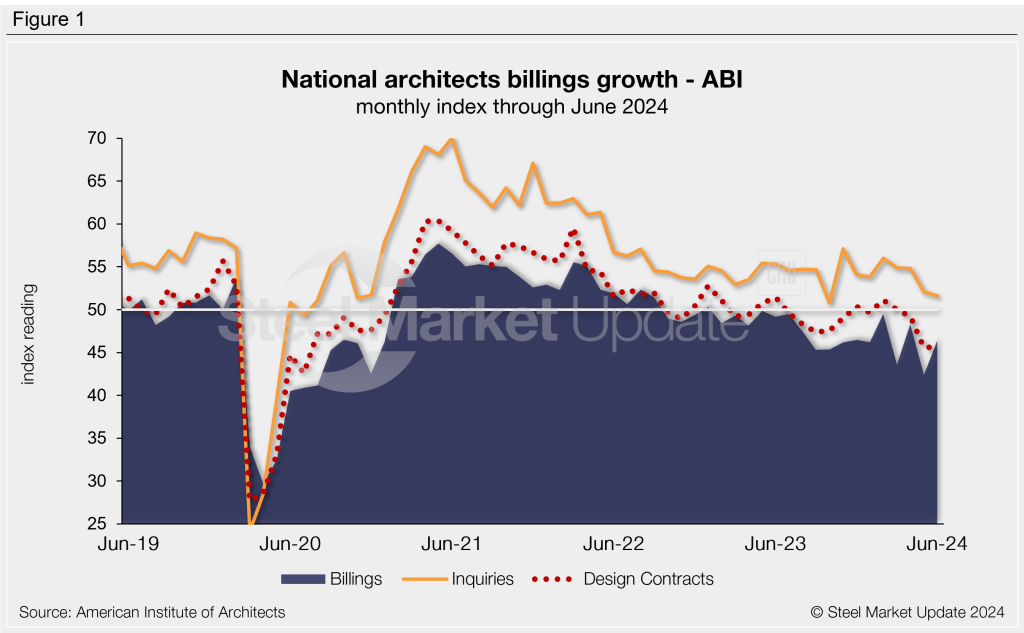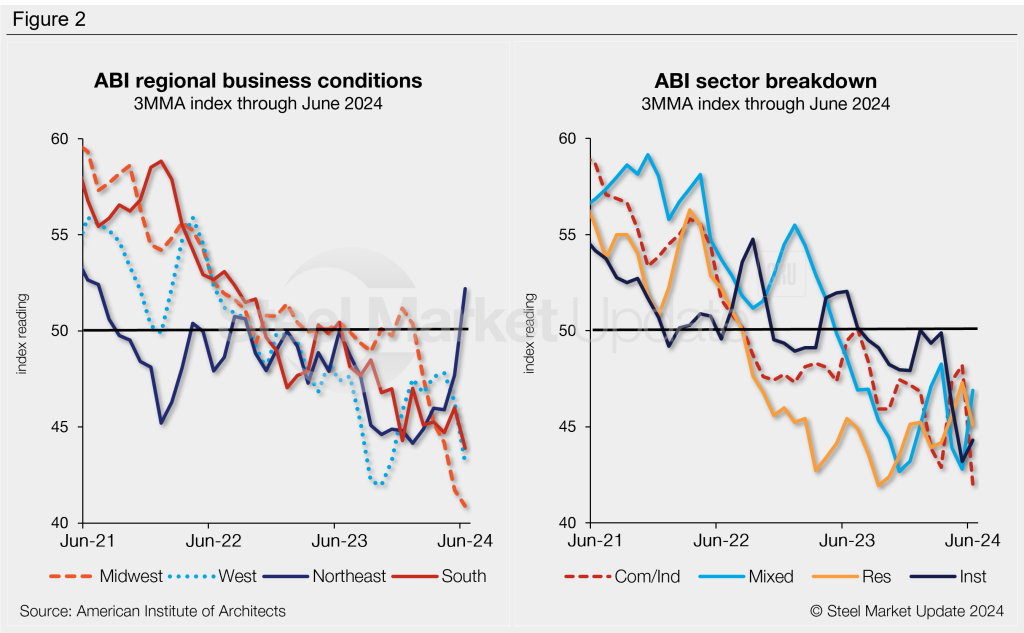Market Data
July 25, 2024
Architecture Billings Index rises from 4-year low in June
Written by Brett Linton
The Architecture Billings Index (ABI) ticked up in June following May’s four-year low, according to the American Institute of Architects (AIA) and Deltek. While the index improved this month, it continues to indicate weak business conditions among architecture firms.
The June ABI score of 46.4 marks the 17th consecutive month the Index has been in contraction territory. This time last year the index was 49.2, while two years prior it was positive at 51.9.
The ABI is a leading economic indicator for nonresidential construction activity. It projects business conditions approximately 9-12 months into the future. Any score above 50 indicates an increase in billings, while a score below that indicates a decrease.

“Architecture firms continue to face a period of headwinds in the construction sector, driven by elevated interest rates, high construction costs, and generally weak property values,” said AIA chief economist Kermit Baker. “Despite the softness, firms remain generally optimistic that conditions will start to improve once interest rates begin to ease.”
The June project inquiries index declined to an eight-month low of 51.6. The design contracts index fell 3.6 points to 45.6, the lowest measure since July 2020.
Three of the four regional indices indicated continually soft business conditions in June, while one indicated improvement (Figure 2, left). The Northeastern region jumped to 52.2, the first positive month for billings in one year. The Southern, Midwestern, and Western indices all declined further from May and remain historically low.
Business conditions by sector moved in differing directions in June, though conditions remained weak across the board (Figure 2, right). The institutional and mixed-practice sectors experienced growth from May to June, while the multifamily residential and commercial/industrial sectors declined.








